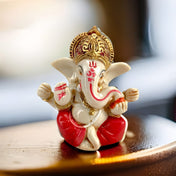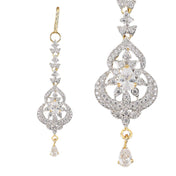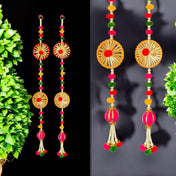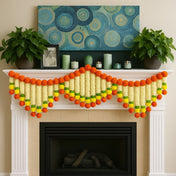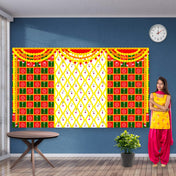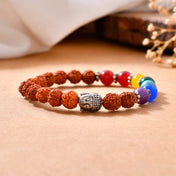The Evolution of Indian Home Decor: A Blend of Tradition and Modernity invites you on a journey through the vibrant tapestry of Indian aesthetics. Indian home decor has long been a reflection of the country's rich cultural heritage, showcasing an exquisite blend of colors, textures, and craftsmanship passed down through generations. This evolution captures how age-old traditions meet contemporary design sensibilities, creating spaces that honor the past while embracing the present.
Readers will discover:
- The deep-rooted significance of traditional elements in Indian interiors, often found in our Indian Decoration Collection
- How modern influences have reshaped styles to fit today’s lifestyles
- The harmonious balance between heritage and innovation that defines current trends
This exploration reveals more than just decoration—it celebrates identity, artistry, and the timeless charm that Indian homes embody in their ever-evolving form.
1. The Roots of Indian Home Decor
Indian home decor is a vibrant blend of traditional Indian decor, cultural heritage, and skilled craftsmanship developed over centuries. Its influences are diverse, showcasing regional styles that embrace bold colors, intricate designs, and luxurious materials. Together, these elements create spaces brimming with history and character.
Characteristics of Traditional Indian Decor
Traditional Indian decor is characterized by:
- Vibrant Colors: Shades like deep reds, mustard yellows, and emerald greens dominate interiors, symbolizing prosperity and warmth.
- Intricate Patterns: Motifs inspired by nature—floral designs, paisleys, and geometric shapes—are hand-carved or painted onto furniture and fabrics.
- Rich Textures: From embroidered textiles to handwoven rugs, tactile richness invites touch and admiration.
The Story Told by Materials
Materials used in Indian homes also have their own tales to tell. Furniture made from teak and rosewood showcases durability and elegance. These types of wood age gracefully, with their grains revealing stories of time passing. Handcrafted artifacts such as brass lamps (diyas) cast a soft golden glow in spaces while terracotta figurines bring earthy charm rooted in folk traditions.
Creating an Inviting Atmosphere
These elements do more than just beautify; they create an environment that is warm, welcoming, and deeply connected to India’s cultural essence. Each item represents not only skillful craftsmanship but also respect for tradition—a timeless connection between the past and the present.
2. Embracing Modern Influences: A New Era in Indian Home Decor
Globalization has brought about a significant change in modern Indian decor, with minimalism becoming a popular style choice among urban households. This style embraces clean lines, uncluttered spaces, and a limited color palette, catering to contemporary lifestyles that prioritize simplicity and functionality. Minimalism in India represents a deliberate shift away from the traditionally elaborate towards an aesthetic that promotes tranquility and openness.
Fusion Furniture: Where Tradition Meets Innovation
Fusion furniture has emerged as a defining characteristic of this era, where traditional craftsmanship merges with modern creativity. Skilled artisans expertly combine age-old methods with sleek designs, resulting in pieces that are both visually appealing and practical. Here are some examples:
- Hand-carved wooden cabinets featuring hidden compartments for efficient storage
- Classic jharokha-style frames reimagined as wall-mounted shelves with integrated lighting
- Ethnic motifs engraved on modular sofas designed for adaptable living spaces
Technology Integration: Enhancing Convenience
The integration of technology further enhances these innovations, with smart home systems and multi-functional furniture providing convenience without sacrificing cultural essence.
Balancing Aesthetics and Practicality
The challenge lies in finding a balance between beauty and functionality. Homes now reflect busy lifestyles that require durable materials and versatile designs alongside aesthetics and authenticity. This combination ensures that Indian homes stay connected to their roots while also meeting the needs of a fast-paced world.
3. Color Palettes and Design Trends: Finding Harmony Between Tradition and Modernity
Indian color schemes have long been celebrated for their vibrancy and depth. Traditional palettes often revolve around deep, rich hues such as maroon, royal blue, mustard yellow, and emerald green. These colors evoke a sense of heritage, warmth, and richness that instantly transport one into the heart of Indian culture. Homes adorned with these shades create an immersive experience, where every corner tells a story steeped in tradition.
Contrasting this, modern color trends India embraces more subdued and neutral tones: think soft beige, muted greys, and gentle pastels. These shades bring calmness and sophistication to interiors while offering a versatile backdrop that complements various styles. The interplay between vibrant traditional colors and these modern neutrals forms a balanced aesthetic—one that respects history but adapts to contemporary sensibilities.
Design fusion has become a hallmark of The Evolution of Indian Home Decor: A Blend of Tradition and Modernity. Ethnic motifs—paisleys, mandalas, floral patterns—are now reimagined alongside geometric shapes and minimalist lines. Textile prints or wallpapers showcasing intricate Indian designs may be paired with sleek furniture featuring clean edges. This thoughtful combination breathes new life into classic styles, making them accessible for urban living without losing their cultural essence.
- Traditional hues: Maroon, royal blue, mustard yellow
- Modern tones: Beige, grey, pastel shades
- Design elements: Ethnic motifs blended with geometric patterns
This dynamic synthesis of color and pattern invites homeowners to create spaces that are both timeless and fresh, reflecting personal tastes grounded in a rich artistic legacy.
4. Curating Spaces: A Thoughtful Approach to Blending Styles in Different Areas of the Home
Creating a balanced living environment in Indian homes involves skillfully weaving traditional charm with contemporary simplicity across various rooms. Each space offers unique opportunities to showcase this synergy, from living room decor India to bedroom design India and kitchen styling India.
Living Room
- Incorporate carved wooden furniture with sleek, minimalist sofas or coffee tables.
- Richly patterned cushions paired with solid-colored throws can add depth without overwhelming the space.
- Layering textiles—such as a handwoven rug over neutral flooring—introduces warmth and cultural texture.
Bedroom
- Blend traditional beds with ornate headboards alongside modern storage units that optimize space.
- Use embroidered curtains or bedspreads featuring ethnic motifs for a personalized touch, balanced by contemporary lighting fixtures that provide soft, ambient illumination.
Kitchen
- Introduce handcrafted terracotta or brass accessories as accents on modern cabinetry and countertops.
- Open shelving displaying ceramic pots or spice jars in vibrant hues complements streamlined appliances, creating an inviting yet functional cooking area.
Maintaining cohesion requires selecting a consistent color scheme or thematic element that threads through each room while allowing individual personality to shine. Thoughtful placement of statement pieces ensures harmony between old-world artistry and present-day practicality, resulting in homes that feel authentic yet fresh.
5. Illuminating Tradition: The Role of Lighting in Evolving Indian Decor
Lighting in Indian homes serves two purposes: to provide light and to tell cultural stories through design. Traditional lighting in India has always celebrated intricate artistry with fixtures like brass diyas, ornate chandeliers, and handcrafted lanterns that cast warm, inviting glows. These elements do more than brighten rooms; they create an ambiance rich in heritage and spiritual symbolism.
Traditional Lighting Elements
Here are some traditional lighting elements used in Indian decor:
- Ornate Chandeliers: Often crafted from metals like brass or copper, these chandeliers feature detailed filigree work reflecting regional motifs. They become focal points in living or dining areas, blending grandeur with tradition.
- Brass Diyas and Lanterns: Used during festivals and everyday rituals, these sources emit soft flickering light, enhancing warmth and a sense of sacredness within the home.
Modern lighting solutions in India introduce sleek forms and energy-efficient technologies while respecting traditional aesthetics. Minimalist pendant lights, recessed LED fixtures, and smart lighting systems offer customizable brightness levels suited to contemporary lifestyles without overshadowing cultural roots.
Key Considerations for Selecting Lighting
When selecting lighting for your home, consider the following key factors:
- Matching the fixture’s style with room functions—soft, diffused light for relaxation; brighter task lighting for kitchens or workspaces.
- Choosing materials and designs that harmonize with ethnic decor elements like carved wood or patterned textiles.
- Incorporating adjustable lighting to shift moods easily throughout the day.
By thoughtfully combining traditional and modern lighting options, homes achieve a balanced atmosphere where heritage meets innovation seamlessly.
6. Sustainability Trends in Indian Home Decor: A Step Towards Conscious Living
Growing environmental awareness has made sustainable Indian decor an essential part of modern interior design. While traditional Indian craftsmanship already uses natural materials, today's designers are going further by using eco-friendly materials India is known for, such as reclaimed wood, bamboo, and natural fibers.
Key approaches to sustainable home decor include:
- Reclaimed Wood Furniture: Salvaged from old structures, this wood brings character and history while reducing deforestation.
- Bamboo Accents: Known for its rapid growth and durability, bamboo serves as a versatile material for furniture, flooring, and decorative elements.
- Natural Textiles: Organic cotton, jute, and silk contribute softness and texture without chemical treatments.
Integrating these materials into modern designs shows that The Evolution of Indian Home Decor: A Blend of Tradition and Modernity doesn't mean giving up quality or beauty. Well-crafted pieces demonstrate how sustainability can go hand in hand with elegance—whether through simple shapes or intricate handcrafted details.
Choosing finishes free from harmful chemicals and opting for locally sourced materials supports not only environmental health but also preserves artisanal communities. This deliberate selection enriches living spaces with authenticity while fostering an eco-conscious lifestyle that honors both heritage and the planet.
7. LoveNspire’s Contribution to Preserving Tradition Through Modern Commerce
LoveNspire brand is a shining example of genuine Indian craftsmanship, offering a thoughtfully selected range of ethnic products in their online store for buyers worldwide to enjoy. With a deep appreciation for cultural heritage and a forward-thinking approach, LoveNspire reimagines traditional art forms into everlasting treasures that speak to various lifestyles.
From Masks to Gifting Essentials
The journey began with handmade safety masks—a practical response to urgent needs—which have since evolved into highly sought-after gifting essentials. These masks showcase meticulous handiwork, blending functionality with aesthetic appeal, reflecting a unique fusion of tradition and modernity.
Upholding Indian Craft Traditions
Alongside these, the store offers an extensive range of home décor items that uphold the spirit of Indian craft traditions, including:
- Intricately designed brass artifacts
- Handwoven textiles
- Classic wooden pieces sourced from skilled artisans
Fostering Connections Through Commerce
LoveNspire’s commitment goes beyond commerce; it fosters connections between generations of artisans and modern consumers who value authenticity. Personalized services ensure each purchase carries meaning while preserving age-old techniques through sustainable practices.
This dedication positions LoveNspire brand not just as a marketplace but as a cultural bridge celebrating India’s rich artistic legacy within today’s global design landscape.
Conclusion
The evolution Indian home decor summary reveals a dynamic journey where tradition and modernity intertwine to craft spaces that resonate with beauty and meaning. Embracing this blend invites individuals to:
- Celebrate rich cultural heritage through vibrant colors, handcrafted details, and timeless materials.
- Infuse contemporary design elements that offer practicality without sacrificing aesthetic charm.
- Create homes that tell stories reflecting personal style alongside historical significance.
A thoughtful curation of decor allows each room to become a canvas where past and present coexist harmoniously. This balance encourages mindfulness in honoring traditions while welcoming innovation, resulting in environments that nurture both comfort and inspiration.
Readers are inspired to explore their unique tastes, weaving cultural echoes into their living spaces. The journey through The Evolution of Indian Home Decor: A Blend of Tradition and Modernity serves as a guide to designing homes that are visually stunning yet deeply meaningful—true reflections of identity and heritage.










